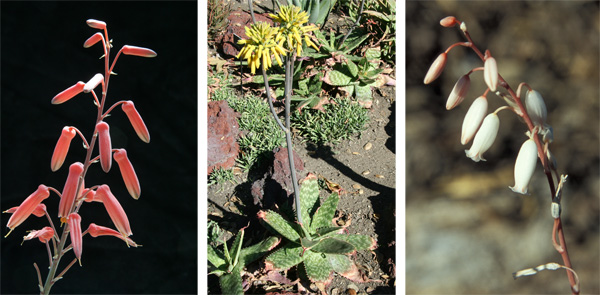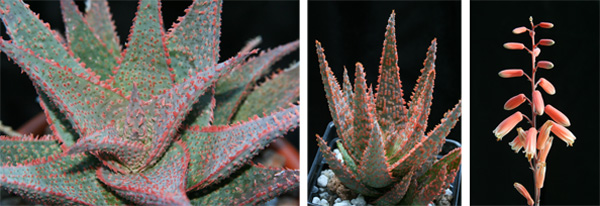Most people are familiar with the therapeutic and medicinal properties of Aloe vera. This versatile plant has been cultivated for over 2000 years and is widely available. You’ve probably seen a small Aloe vera plant in someone’s kitchen, ready to soothe burns or cuts. But did you know that Aloe vera might not exist in nature? While similar plants can be found in Oman, the exact origins of Aloe vera remain a mystery.
Aloe: A Diverse and Beautiful Genus
Aloes belong to the Asphodelaceae or Aloaceae family and are native to Africa, particularly the drier regions of southern and eastern Africa, Madagascar, and southern Arabia. With over 400 named species, aloes come in a variety of sizes and forms. From massive trees to tiny ground-huggers, these plants are known for their succulent leaves. Some have rosette patterns, while others show fan-like or grass-like leaves.
Vibrant and Colorful Flowers
Aloe flowers are stunning and come in various shades of pink, red, orange, yellow, white, and even green. Bicolor flowers are not uncommon. The flowers form loose to tight clusters on slender stalks, creating beautiful racemes.
Thriving in Wisconsin
Aloes are popular among cacti and succulent enthusiasts worldwide. While larger species thrive in sunny climates, smaller species adapt well to lower light conditions. In Wisconsin, aloes can be grown as container plants. During the summer, place them outdoors in a sunny spot, and bring them inside during cool, cloudy, or frosty weather. Many species produce offsets and can form attractive clumps. Additionally, cuttings are easy to propagate.
Hybrids and Tissue Culture
Hybrid aloes are a result of years of breeding and selection. Some hybrids exhibit incredible colors and textures, making them highly sought after. These hybrids can be quite expensive, but they are truly unique. With advancements in tissue culture, propagating desirable hybrids has become more efficient.
Growing and Caring for Aloes
Aloes prefer well-drained soil and pots with drainage holes. They are generally summer growers but can tolerate frequent rains if the soil is well-drained. During winter, it’s best to keep them on the dry side. Protect them from prolonged temperatures below 50°F and freezing temperatures. In Wisconsin, smaller aloes can be kept on a bright windowsill during their winter rest period.
Bringing Color to Winter
Many small aloes bloom during winter, adding a splash of color to the dull season. Providing abundant light throughout the year increases the chances of blooming. However, be cautious when purchasing aloes from large chain stores, as they might be generically labeled or misnamed. Reputable online nurseries offer a wide variety of aloes to choose from.
Aloes for Every Space
Here is a list of small and dwarf species aloes that are commonly available:
- Aloe albiflora (Madagascar)
- Aloe aristata (South Africa)
- Aloe bakeri (Madagascar)
- Aloe bellatula (Madagascar)
- Aloe bowiea (South Africa)
- Aloe brevifolia (South Africa)
- Aloe calcairophila (Madagascar)
- Aloe descoingsii and subsp. augustina (Madagascar)
- Aloe droseroides (Madagascar)
- Aloe florenceae (Madagascar)
- Aloe fragilis (Madagascar)
- Aloe haworthioides (Madagascar)
- Aloe humilis (South Africa)
- Aloe inexpectata (Madagascar)
- Aloe juvenna (Kenya)
- Aloe krapohliana ssp. dumoulinii (Namibia)
- Aloe longistyla (South Africa)
- Aloe parvula (Madagascar)
- Aloe pseudoparvula (Madagascar)
- Aloe rauhii (Madagascar)
- Aloe sladeniana (Namibia)
- Aloe variegata (South Africa)
These species are clump-forming and suitable for small to medium-sized pots. Some are readily available, while others may be harder to find or more expensive.
Article by Dan Mahr, University of Wisconsin – Madison. All photographs © Daniel L. Mahr.








